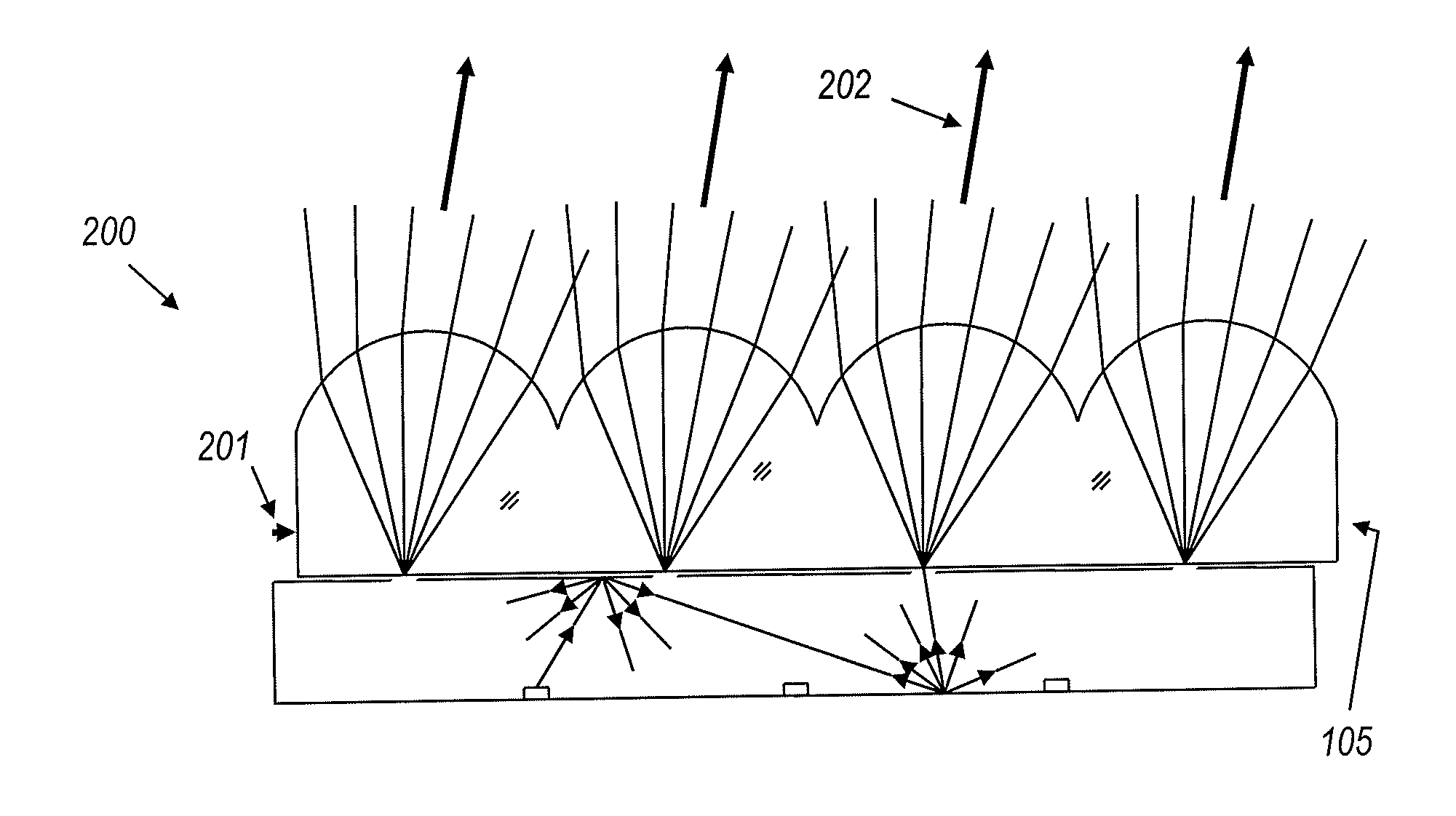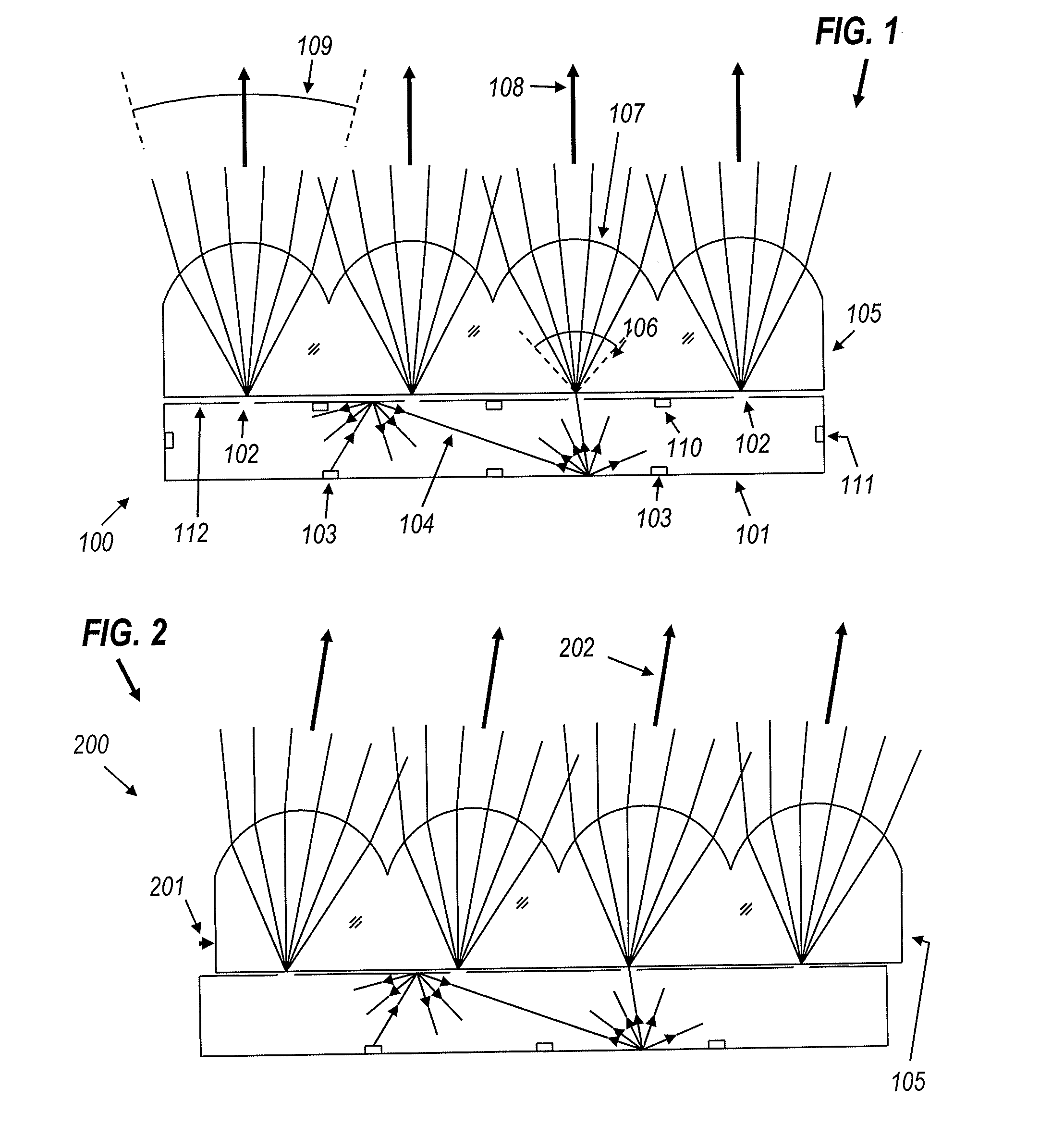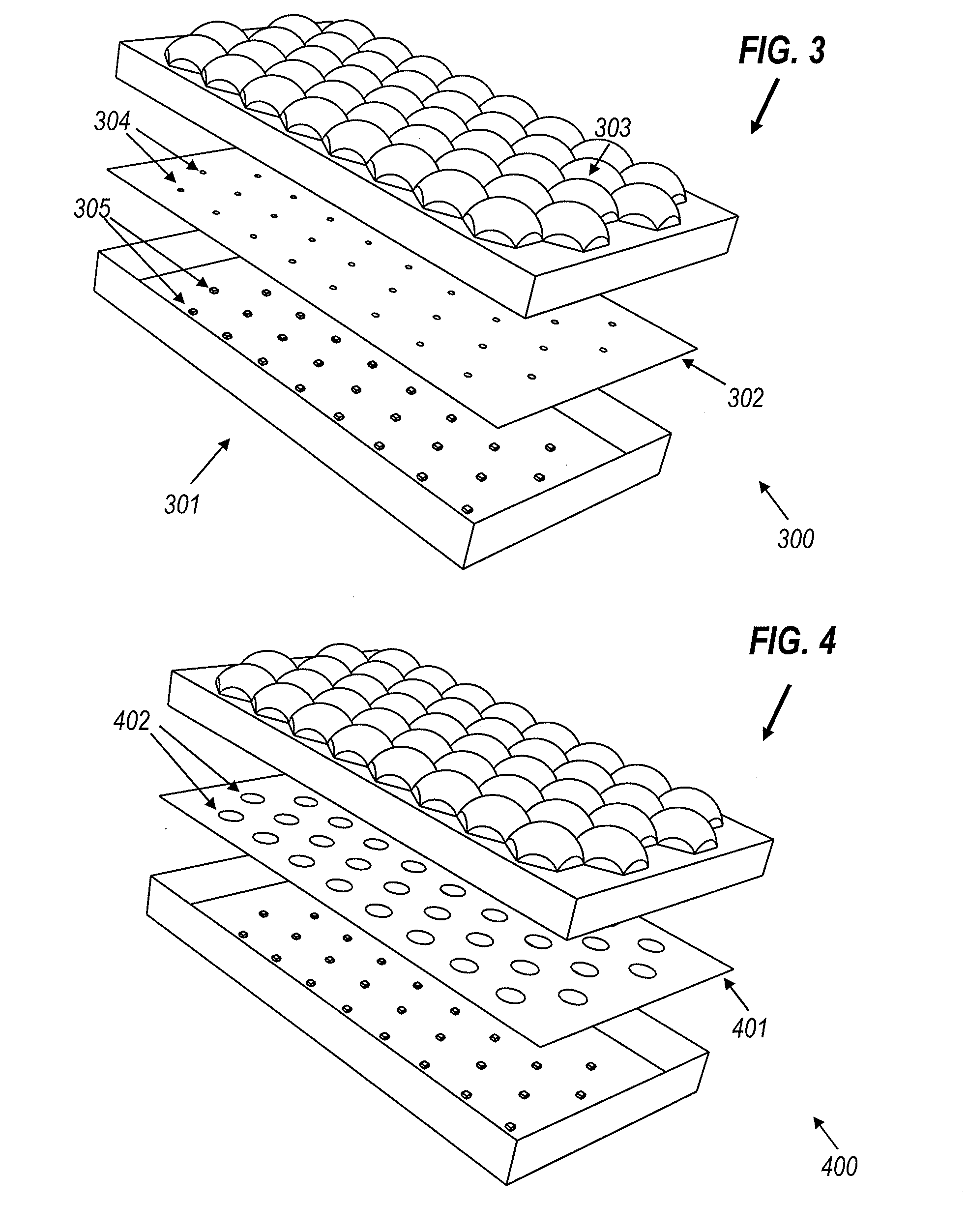Thin luminaire
a technology of light emitting diodes and luminaires, which is applied in the direction of identification means, lighting and heating apparatus, instruments, etc., can solve the problems of limited emission patterns and notable limitations, and achieve the effects of excellent color mixing, high utilization factor of present luminaires, and inability to easily adjust the spectrum of lamps
- Summary
- Abstract
- Description
- Claims
- Application Information
AI Technical Summary
Benefits of technology
Problems solved by technology
Method used
Image
Examples
embodiment 200
[0043]FIG. 2 shows an embodiment 200 of a luminaire as a beam steering device. It is similar to the device in FIG. 1 except that top optic 105 is movable relative to the holes 102 in the perforated sheet forming the top wall of mixing chamber 101, and may slide sideways by a displacement 201. This results in an angular displacement of the emission pattern, which now exits in direction 202. Because of refraction where the light enters the bottom surface of optic 105, the light proceeds from each hole 102 to the respective lens 107 in a conical beam, the cone angle 106 of which is determined by the critical angle at the bottom surface of optic 105, and therefore by the refractive index of the material of optic 105. The optic 105 is made thin enough that the conical beams from adjacent holes 102 do not meet within the optic 105. The gap between adjacent beams is larger than the maximum travel 201 of the optic 105, so that each conical beam is entirely captured by its respective lenslet...
embodiment 500
[0047]FIG. 5A shows embodiment 500 which is a similar device to that in FIG. 4 but now with specially shaped holes 504 in sheet 502. This shaping of the holes may be used to generate a special pattern, for example that of a low beam automotive headlamp. Edges 506 and 508 of the holes have different shapes facilitating the process of generating the desired pattern output.
[0048]Referring to FIG. 5B, in a further modification 520 of the device of FIG. 5A, the holes 524, 526 may be provided with liquid crystal device (LCD) or other switchable arrays 522, so that the effective shapes of the holes 504 can be changed electronically, even when the luminaire 500 is in use. These LCDs have the ability to either “open” the holes (letting light through) or “close” the holes (reflecting part of the light back) in response to electrical inputs. It is presently preferred to provide a separate small LCD array for each hole 524, 526, with the space in between being solid, highly reflective material,...
PUM
 Login to View More
Login to View More Abstract
Description
Claims
Application Information
 Login to View More
Login to View More - R&D
- Intellectual Property
- Life Sciences
- Materials
- Tech Scout
- Unparalleled Data Quality
- Higher Quality Content
- 60% Fewer Hallucinations
Browse by: Latest US Patents, China's latest patents, Technical Efficacy Thesaurus, Application Domain, Technology Topic, Popular Technical Reports.
© 2025 PatSnap. All rights reserved.Legal|Privacy policy|Modern Slavery Act Transparency Statement|Sitemap|About US| Contact US: help@patsnap.com



